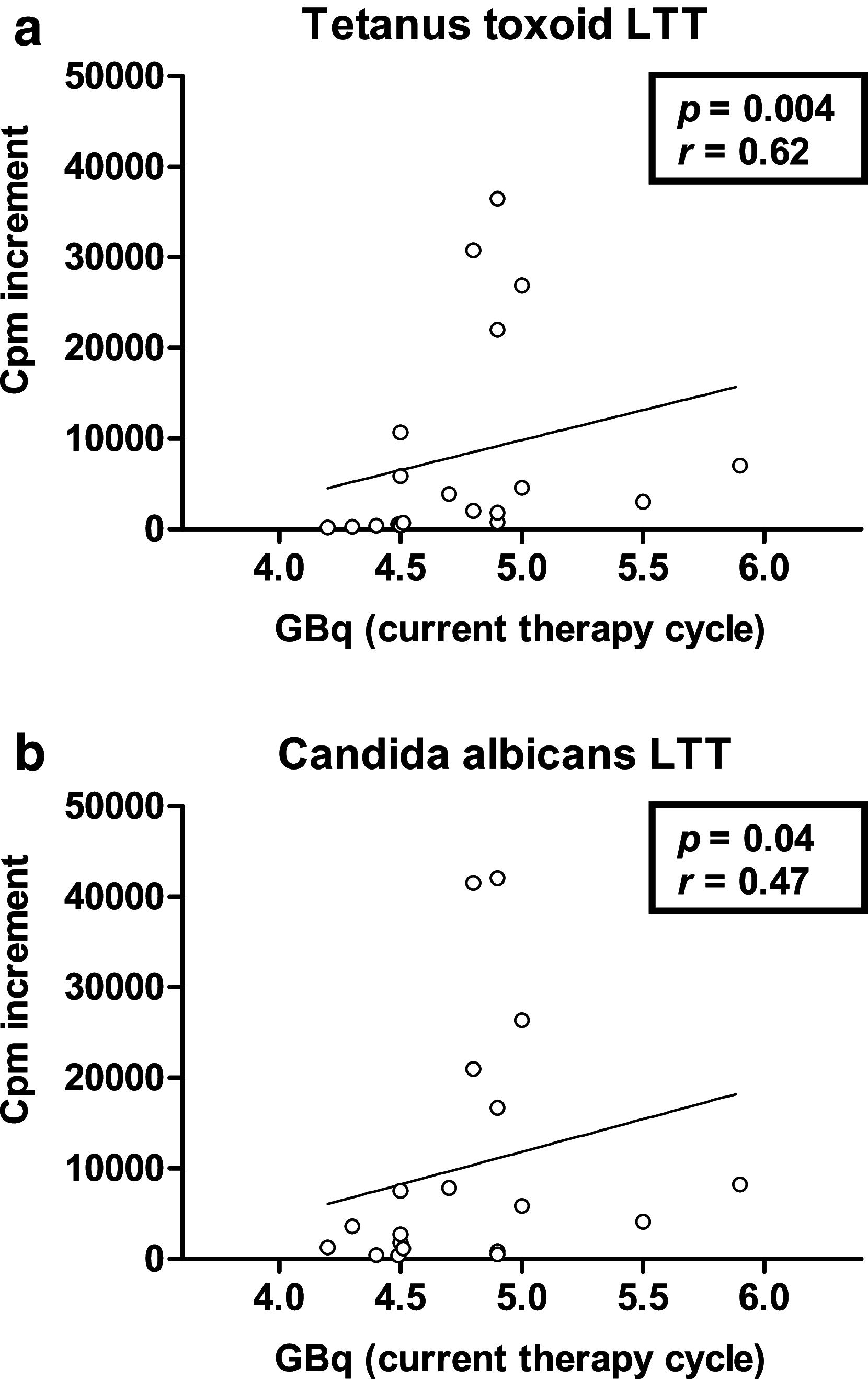Impairment of lymphocyte function following yttrium-90 DOTATOC therapy
- PMID: 25822768
- PMCID: PMC11029032
- DOI: 10.1007/s00262-015-1687-3
Impairment of lymphocyte function following yttrium-90 DOTATOC therapy
Abstract
The radiolabeled somatostatin analogue, yttrium-90 DOTA-D-Phe(1)-Tyr(3)-octreotide (DOTATOC), is currently applied to treat advanced somatostatin receptor-positive tumors, e.g., neuroendocrine tumors of the pancreas, lung or gut. However, effects of this treatment on antimicrobial immune responses are not yet defined. In 20 patients treated with DOTATOC, cellular in vitro immune function was determined. Their antimicrobial lymphocyte responses were assessed by lymphocyte transformation test and enzyme-linked immunospot-measuring lymphocyte proliferation and on a single cell level production of pro- and anti-inflammatory cytokines (interferon-γ and interleukin-10)-prior to therapy, at day 1, day 7 and day 90 post-therapy. Proliferative lymphocyte responses and interferon-γ production after in vitro stimulation with microbial antigens were non-significantly suppressed at day 1 and significantly (p < 0.05) at day 7 versus pre-therapy. In vitro immune responses did not fully recover until day 90. In contrast, at day 1 interleukin-10 production was significantly (p < 0.05) increased. Taken together, we observed a decrease in pro-inflammatory immune responses after DOTATOC therapy. Patients with versus without bone metastases displayed significantly (p < 0.05) lower cellular immune responses toward several microbial antigens. Progressive disease and higher tumor burden could also be defined as factors associated with impaired immune function. Spearman correlation analysis indicated that cellular in vitro immunity was positively correlated with kidney function; better kidney function led to stronger immune responses. In conclusion, DOTATOC therapy caused a decrease in in vitro immune responses against microorganisms. The clinical impact needs to be evaluated in further studies.
Conflict of interest statement
The authors declare that they have no conflict of interest.
Figures




References
-
- Perico ME, Chinol M, Nacca A, Luison E, Paganelli G, Canevari S. The humoral immune response to macrocyclic chelating agent DOTA depends on the carrier molecule. J Nucl Med. 2001;42(11):1697–1703. - PubMed
-
- Kozak RW, Raubitschek A, Mirzadeh S, Brechbiel MW, Junghans RP, Gansow OA, Waldmann TA. Nature of the bifunctional chelating agent used for radioimmunotherapy with yttrium-90 monoclonal antibodies: critical factors in determining in vivo survival and organ toxicity. Cancer Res. 1989;49(10):2639–2644. - PubMed
-
- Knox SJ, Goris ML, Trisler K, et al. Yttrium-90-labeled anti-CD20 monoclonal antibody therapy of recurrent B-cell lymphoma. Clin Cancer Res. 1996;2(3):457–470. - PubMed
MeSH terms
Substances
LinkOut - more resources
Full Text Sources

